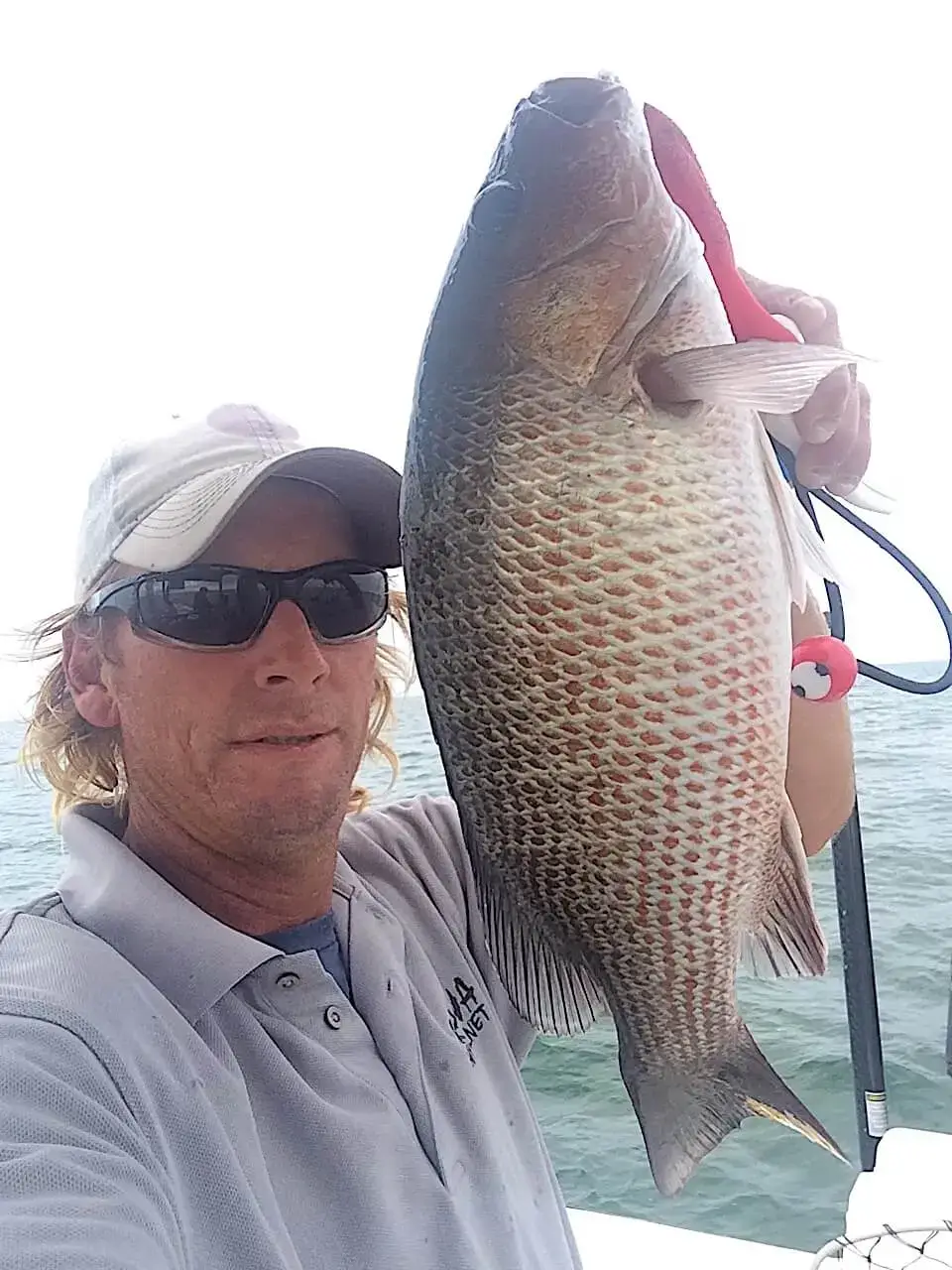

Sanibel Fishing & Captiva Fishing, January 23, 2018: Big Mangrove Snapper.
Captiva Fishing Report, Tuesday, January 23: Big Mangrove Snapper, Near Offshore Structure, Catch & Release; Red Tide Report (Caloosahatchee freshwater runoff impact continuing to lessen a bit; some Red Tide but it is broken up and largely dispersed); more fishing reports from other areas and Captains below.
Tuesday, January 23: Big Snapper, Structure, Catch & Release, Warming Up – Less Worried About The Snook. Looks like we will be okay.

Please also visit the Sanibel, Fort Myers, Florida Fishing Report and Cuban Fishing sites. Better water moving north of Sanibel up through Captiva & North Captiva.
Please click here to Book A Charter or call 239-472-8658 and here for Live Sanibel Traffic Cams.
![Snapper, Catch & Release, Sanibel Fishing & Captiva Fishing, Sanibel Island, Sunday, November 26, 2017, [File Photo - Thursday, August 3, 2017].](https://captivafishing.net/wp-content/uploads/2017/08/Snapper-12-16-18-e1501870864746.webp)

Its color is typically greyish red, but it can change color from bright red to copper red. It has a dark stripe running across its eye if observed from the top when it is under water. This species can reach a length of 89 cm (35 in), though most do not exceed 40 cm (16 in). The greatest recorded weight for this species is 20 kg (44 lb).[2]
The mangrove snapper can be confused with the Cubera snapper or black snapper, Lutjanus cyanopterus. Mangrove snapper are typically much smaller than Cubera, but when they are of similar size, the two species can only be distinguished by examining the tooth patch on the inside roof of the mouth.
![Schoolmaster Snapper, Sanibel Fishing & Captiva Fishing, Sanibel Island, Thursday, January 11, 2018, [File Photo - Thursday, December 28, 2017].](https://captivafishing.net/wp-content/uploads/2017/12/Snapper-Schoolmaster-12-28-17-e1514548292345.webp)
The mangrove snapper feeds mostly on small fishes and crustaceans. It was also observed as systematically waiting under the maternal colony of Buffy flower bat for falling bats near the entrances of Lucayan cavern, Bahamas.[3]

The mangrove snapper is one of the most common species of snapper in warmer regions. It can be found in many areas from canals to grass flats, as well as in open water. Most mangrove snapper in the open water are generally found near bottom structure or reefs. They can be found at depths from 5 to 180 m (16 to 591 ft) though are mostly found at less than 50 m (160 ft).[2]
Mangrove snapper is a common target for anglers and is highly prized for its light and flaky flesh. It can be caught on a variety of baits but is typically caught with live or frozen shrimp, squid, minnows and occasionally on artificial lures or baits.

They can be spearfished, as well, but are sometimes a tough target, as they tend to be more wary of divers, rather than curious, and their wariness of baits and divers tends to increase as the fish grow larger. Most mangrove snapper are caught on light to medium tackle, and typical catches range from eight to 14 in long in shallow or inshore waters, and up to 20 in long in deeper waters. Larger fish are uncommon, but not rare. Please see more information here.

FWC: Gray Snapper Overview
“Also known as mangrove snapper, mango or black snapper.
- Dark brown or gray in color, with red-orange spots in bars along the sides
- Two large canine teeth near front of upper jaw
- Anchor-shaped vomerine tooth patch
- Dorsal fins with dark or reddish borders
- Young have dark stripe from snout, through eye, to upper edge of gill cover

Similar Species: Cubera snapper, L. cyanopterus (triangleshaped tooth patch and grow much larger than gray snapper); schoolmaster, L. apodus (yellow fins and faint white bars); and true black snapper, A. dentatus (rare in Florida; do not range north of the Florida Keys)
Size: Common to 24 inches (10 pounds)
Coastal waters near structure such as reefs, mangroves, and seagrass. Juveniles may enter freshwater.
Spawn June through August. Feeds on crustaceans and small fish. Gray snapper caught offshore are common 8 to 10 pounds.” Please Click Here For More Information and Recreational Regulations.

Please click here to Book A Charter or call 239-472-8658 and here for Live Sanibel Traffic Cams. Big Mangrove Snapper, click here for College Of Fishing Hats & Apparel.
We’re located in Castaways Marina, Santiva, Sanibel Island, just before the Blind Pass bridge to Captiva Island.

After a fierce storm, Turner Beach, the beach adjoining the Pass, is frequently covered with a bounty of shells from Olives to Fighting Whelks to the more common Conchs. The fishing is also renowned for sharks in the summer, tailing redfish on the bayside flats and snook under and off the Blind Pass bridge. Because Turner Beach faces Westward, the sunsets are spectacular and a popular viewing point for residents and visitors alike.

And you can like us on Facebook.
Fair winds and following seas,
Captain Joey Burnsed ~ please click calendar at the upper left or call 239-472-8658 to book a Sanibel & Captiva Islands, Boca Grande or Fort Myers fishing guide trip or shelling charter.






